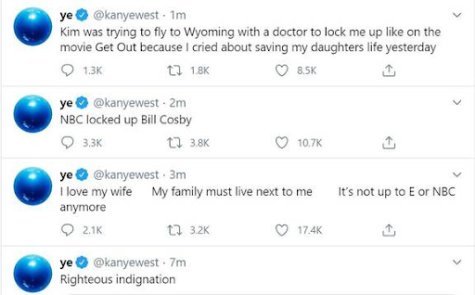The right to die
November 12, 2015
The right to die isn’t something talked about lightly.
Physician assisted suicide receives countless amounts of criticism from people with common misconceptions about the process. Many see it as a religious matter, claiming that their faith is opposed to this idea. But isn’t it a terminally ill and mentally competent patient’s right to determine for him or herself whether or not they want to end their already ending life?
Oregon first made the decision to make physician assisted suicide legal on Nov. 8, 1994. There are several requirements in order to attain life ending drugs in Oregon: you need to be a resident, 18 or older, diagnosed with terminal illness and have six months or less until expected death, capable of making and communicating mentally competent health care decisions for yourself and finally need to request for the process at least twice (written and oral) from a physician.
Since Oregon passed this decision, California, Montana, Vermont and Washington followed and legalized assisted suicide with similar requirements. The 45 other states still consider assisted suicide illegal and classify it as a crime along with crimes such as manslaughter and first or second degree murder. These are serious crimes that are given to felons; helping a terminally ill patient receive the death he or she desires shouldn’t be classified among these crimes.
Dignity in Dying’s latest survey showed that 44% of respondents would break the law in order to help a terminally ill loved one die.
Jack Kevorkian, nicknamed “Dr. Death” by the media, is physician who first believed in assisted suicide and first started promoting the right to die. The first patient that Dr. Kevorkian assisted was Janet Adkins, a 54 year-old Alzheimer’s patient from Michigan. Since Michigan has an indecisive stance on assisted suicide, Dr. Kevorkian’s murder charge was dismissed. Although his medical license was revoked and Michigan declared physician suicide illegal, Kevorkian didn’t stop his campaign. He was prosecuted a total of four times, but was never imprisoned.
Although Kevorkian died in 2011, his right to die campaign is still prominent in today’s society. The website Dignity in Dying, provides the public with information on physician assisted suicide and the ways to take action. The steps to become involved include joining the campaign and donating to the cause. This website isn’t telling terminally ill patients that they need to undergo physician assisted suicide, but rather provides information for patients and the public. It clarifies the law, gives patients someone to talk to about their decision and names helpful organizations that provide patient support. Dignity in Dying’s latest survey showed that 44% of respondents would break the law in order to help a terminally ill loved one die. There shouldn’t be a need for people to break the law in order to help a loved one; this act should be legal everywhere.
Dignity in Dying also gives the opportunity for patients to share their personal stories. One anonymous entry, given the pseudonym Jane Stephen, explains that she was diagnosed with terminal cancer and didn’t want to suffer any longer:
“It is not a slippery slope – it is not for the disabled, elderly or those suffering dementia. It is for the terminally ill who have utterly no hope of living. And it is NOT, NOT obligatory. This is about choice, for goodness’ sake, from the very start.”
A common misconception with assisted suicide is that it is a “slippery slope.” Opponents believe that it directly leads to euthanasia, the act of mercy killing which implies involuntary death. Euthanasia is a completely separate topic from physician assisted suicide; this act is still illegal in the five states that have legalized Death with Dignity laws and will not become legal if these laws are expanded to other states.
Religious conservatives believe that God gave us this life, and God is the only person who can end it. But does God want patients to suffer?
Letting assisted suicide become legal doesn’t force you or anyone you may know to die this way if diagnosed with a terminal illness. Physician assisted suicide simply gives individuals the choice to do what they want with their final days, which is everyone’s right.











